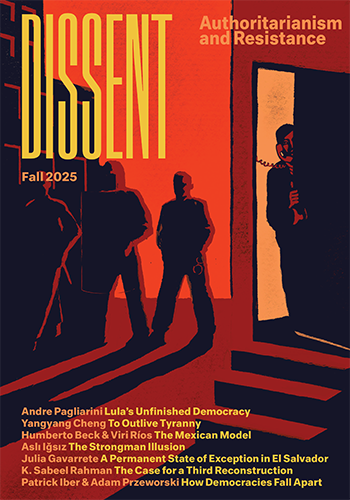Symposium: Split to Win? Assessing the State of the Labor Movement
Symposium: Split to Win? Assessing the State of the Labor Movement
More than a decade ago, John Sweeney ousted Lane Kirkland and promised to revitalize the labor movement. He put a greater emphasis on organizing and more militant action on behalf of America’s working families. Sweeney and his team brought many positive changes to the AFL-CIO—a willingness to reach out to students and the broader progressive community, a new approach to the international economy free of cold war concerns, a robust political program—yet labor’s decline continued. Last year, seven unions with a combined membership of six million workers left the AFL-CIO to form a new labor federation called Change To Win (CTW). The unions in CTW argue that the AFL-CIO as currently structured, a loose federation of independent unions, each responsible for organizing in its own jurisdiction, is incapable of addressing the crisis of American labor. Modeled, in part, on the Congress of Industrial Organizations (CIO), the new federation promises a single-minded focus on organizing. It plans to mount large-scale, multi-union organizing campaigns focused on jobs—such as retail, building services, hospitality, health care, food service—that cannot be outsourced. Labor’s revitalization remains a prerequisite for a progressive politics. Its steady decline has led to lower living standards for millions of workers, a frightening growth in inequality, a weakening of liberalism. We have asked some close observers of the labor movement to evaluate these recent developments. Does Change to Win represent a new approach to dealing with labor’s crisis? Was the split necessary? Is the labor movement weakened by the split? What will be the political impact of the split? –EDS.
Joshua Freeman
Many of us feel ambivalent about the split in the labor movement. The discussion that accompanied it was narrow and rancorous. The odd alliances that emerged seemed as motivated by individual and institutional self-interest as by principle. Enormous energy was devoted to a parting of ways that might not have been necessary. Still, some good may come of it.
Unionists on both sides of labor’s fissure were deeply disappointed by the events of the last decade. The ouster of the old leadership of the AFL-CIO brought refreshing breezes into the musty, sometimes foul, atmosphere of the House of Labor. John Sweeney and his allies did so many things right: embracing militancy and the cause of low-wage workers; preaching the gospel of organizing; beefing up labor’s political operation; reaching out to students, clergy, and the left; and bringing greater diversity to the leadership of the AFL-CIO. Yet today, in many respects, labor is worse off than when Lane Kirkland held office.
Organized labor itself caused some of the problems. Although the AFL-CIO managed to bring new attention to workplace injustice, it failed to engineer a wholesale shift in national perceptions. Many unions that already had organized...
Subscribe now to read the full article
Online OnlyFor just $19.95 a year, get access to new issues and decades' worth of archives on our site.
|
Print + OnlineFor $35 a year, get new issues delivered to your door and access to our full online archives.
|






